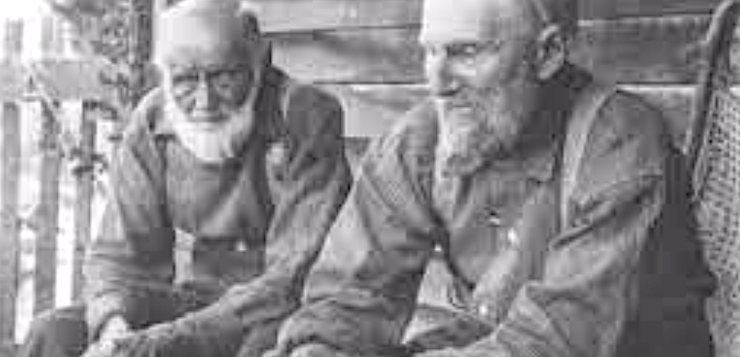THE TOWN OF SECOND GARROTE in California got its name because it was the other camp on Moccasin Hill where folks might gather to witness the hanging of claim-jumpers or other desperados. The name reflected the inhabitants of the town, with the first word pronounced as English and the second as Spanish. There was a fandango near the hangman’s tree where you could dance, but Second Garrote was best known as the home of the wedded bachelors.
Before a switchback road was cut into the hillside for the stagecoach, about the only way to reach Second Garrote was on foot or on horseback, the latter being preferred, as the trek was up a long and steep ascent. On a hot day, with the sun directly overhead as you trudged, each step would send up a small puff of parching tawny powder, though for part of the way at least there was a narrow pack trail blazed by the Miwok Indians that wound along the edge of Rattlesnake Creek at the bottom of a deep arroyo, where you might find some shade if you were lucky. Then, at last, you crested the hill and there was their cabin. Chaffee might be on the front porch offering a pitcher of cool cider pressed from their own orchard, and Chamberlain might be sitting with his long legs splayed out in front of him. Looking at the couple you might wonder: who is the husband, and who the wife? But such questions had no meaning on Moccasin Hill.
John Amos Chaffee was born in 1823 in Woodstock, Connecticut, and Jason Palmer Chamberlain two years earlier in Windsor County, Vermont, but they met in Worcester, Massachusetts, where Chaffee worked as a wheelwright and Chamberlain as a carpenter. The attraction was immediate and mutual, and they pledged to spend their lives together, but New England was not a welcoming place for men who loved men. Sodomy prosecutions were mercifully few, but gossip alone could make a man’s life a misery, so they decided to flee the meddlers and the magistrates. In 1849, the Eastern seaboard was abuzz with news about gold discoveries in California—it seemed half the young men of New England were rushing to wade ankle-deep in icy mountain streams—so Chamberlain and Chaffee slipped quietly into the surging crowd, through the hugging of mothers and the kissing of sweethearts, and set off to make a new life for themselves far away, and on their own terms.

The couple sailed from Boston on January 24, 1849, aboard the ship Capitol, Monckton Proctor captain. They discovered there were four other young men from Worcester aboard, and since none of them had the foggiest idea of how to pan for gold, they decided to stick together and share whatever fortune brought. After a voyage of 176 days around the Horn, the men arrived in San Francisco. “We found a very great change from the staid and steady habits of our New England home,” Chamberlain later wrote. “Here gambling was the prevailing amusement. Men just returned from the mines would bet their last dollar on the turn of a card. Suicides and murders were of a frequent occurrence.”
William Benemann is the author of A Year of Mud and Gold: San Francisco in Letters and Diaries, 1849-1850, and Men in Eden: William Drummond Stewart and Same-Sex Desire in the Rocky Mountain Fur Trade.







